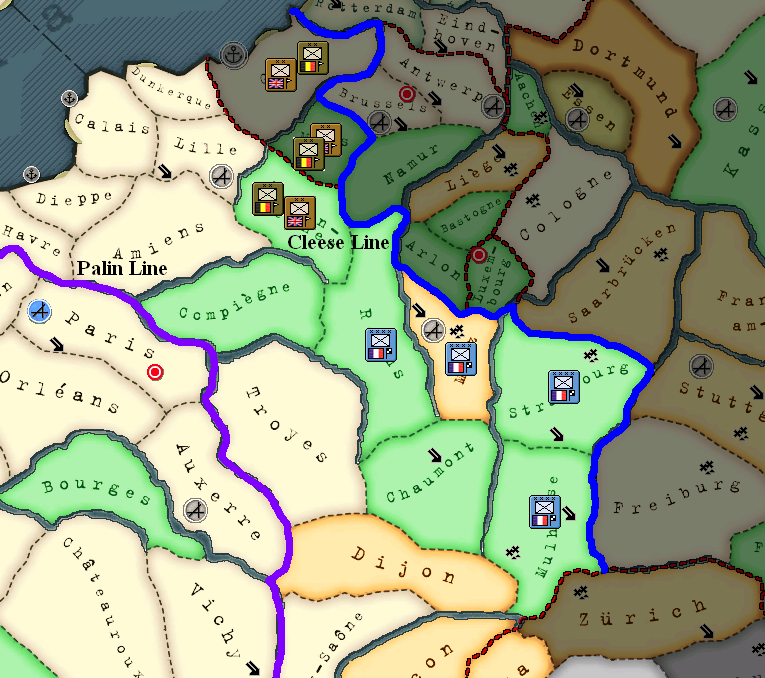The Sound of Drums - A British Hearts of Iron AAR
Part Twenty-Eight
2nd April - 2nd May 1940
Operation Hammer was the name given to the naval operations for the Norwegian campaign. The plans for the land operation was named Operation Anvil. It was hardly an original pairing of names, but it was apt for this occasion. British forces along the coast would simply form a barrier to prevent Axis forces from breaking through, while the Royal Navy would launch devastating strokes against any attacking force - in particular the transport and supply craft.
Operation Anvil: British troop positions in Norway
Throughout April, it turned out that sending ground troops to Norway may have been rather hasty, for at no point did they come near to repulsing a German landing. All the necessary battles were carried out by the Grand Armada, which tirelessly hit the Kriegsmarine transport fleets, submarines and First Flotte no less than four times during April. All the German attempts at leaving their bases were repulsed for the loss of one cruiser, the HMS
London.
Relatively speaking, such losses were a small price to pay for keeping the German fleet from escaping to the Atlantic. It was, however, fairly apparent that the reason for such vessels being lost was due to their age - the three most recent victims were decade-old County-class cruisers against the newest battleship, the
Bismarcks. As such, it was finally decided that the proposed Fourth Fleet would finally begin construction in the very near future. Proposals were also put forward to construct additional carriers and cruisers for existing fleets as well as officially disbanding the First Support Fleet, its ships to be redeployed to other fleets.
At present however, British industries could not cope with a new shipbuilding programme. The major shipyards across Britain and Ireland were still being upgraded to cope with the expected stress of building the new, larger, war vessels. Funding was also a concern - most of it was currently going into upgrading existing divisions and the airforce, as well as new forces for the European and African fronts. Something would need to be sacrificed if a new fleet was to be built.
The new Hawker Typhoon
Luckily, several military projects were coming to an end. The home defence stations - the radar and fixed AA batteries were completed in April, as was the construction of new Crusader tank divisions. This would be enough to begin the construction of new aircraft carriers - including the brand new
Illustrious-class - in the near future.
For now, High Command had to be content with what they had. The new Hawker interceptors came into service on the 22nd April, with existing divisions promised the new aircraft by the end of the year. Motorised and standard infantry divisions were made ready for France, and they were slowly deployed in the last week of April. With the dominance of the Grand Armada in the North Sea, it seemed there was little need to worry about German actions in the near future.
Hitler moves west!
Germany surprised many in the Cabinet of Doom with their declaration of war on the 2nd May. With the exception of Lord Pugwash, who had predicted such an early move, most had hoped for Hitler to concentrate on the Norwegian campaign for a few more months before focusing his forces into France. It was possible then, that the Royal Navys victories in the North Sea had spurred the German dictator to return to his most elite weapon - the infantry and armoured forces that made up the wehrmacht.
Hitler now hoped to achieve dominance against his enemies in an outright confrontation. Allied and Axis forces would now take on one another directly, rather than through mere sideshows in Poland and Norway. The War in the West had begun












